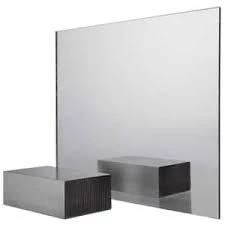

Understanding Pattern Glass Types A Glimpse into Decorative Glassware
Pattern glass, a category of glassware characterized by intricate designs and textural patterns, has captivated enthusiasts and collectors for centuries. This unique form of glassmaking can be traced back to the 19th century and has evolved into a beloved type of decorative art. The appeal of pattern glass lies not only in its aesthetic qualities but also in the craftsmanship and historical significance associated with various styles and types.
Historical Context
The origins of pattern glass can be linked to the Industrial Revolution, which introduced advancements in glassmaking techniques. In the early 1800s, American glassmakers began experimenting with molds and pressing techniques, leading to the birth of pattern glass. By the mid-1800s, pattern glass became increasingly popular, largely due to its affordability compared to cut glass, which was labor-intensive and costly. While initially utilized for functional items such as tableware and pantry jars, pattern glass soon found its place in decorative objects and collectibles.
Types of Pattern Glass
There are several recognized types of pattern glass, each with its own unique history and design elements. Among the most notable types include
1. Pressed Glass This is produced by pressing molten glass into molds, resulting in clear, precise patterns. Popularized in the late 19th century, pressed glass became ubiquitous in American households. Styles such as “Daisy and Button,” and “Moon and Stars” exemplify the crisp designs achievable with this method.
2. Cut Glass Unlike pressed glass, cut glass involves manually carving intricate designs into the surface. Although this technique was more labor-intensive, it allowed for greater detail and depth. Cut glass items often feature brilliant, sparkling surfaces that catch and reflect light beautifully.

3. Cameo Glass This type of glass involves layering different colors of glass and then carving into the layers to reveal contrasting colors. The resulting designs can be both delicate and dramatic, making cameo glass highly sought after by collectors.
4. Opalescent Glass Known for its unique color effects, opalescent glass exhibits a milky, translucent quality. This type of glass often features swirling patterns that seem to change with the light, creating a mesmerizing visual experience. Manufacturers like Fenton and Northwood were known for their stunning opalescent creations.
5. Cranberry Glass Recognized for its vibrant pink to red hue, cranberry glass gained popularity in the late Victorian period. Its color comes from the addition of gold salt to the glass mixture, making it rare and cherished among collectors.
Collecting Pattern Glass
Collecting pattern glass can be both a rewarding hobby and a challenging endeavor. As with any collectible, knowledge about the different types, manufacturers, and time periods can greatly enhance the collector's experience. Many collectors focus on specific styles or eras, ranging from Victorian-era pressed glass to Art Deco designs.
When collecting, it's essential to understand the specifics of each piece, including its condition, rarity, and provenance. Hidden gems may often be found at estate sales, flea markets, and antique shops, and the thrill of discovery adds a layer of excitement to the collecting experience.
Conclusion
Pattern glass types serve as a testament to the ingenuity and artistry of glassmakers from the past. Each piece tells a story, reflecting the cultural and aesthetic values of its time. For both collectors and casual admirers alike, pattern glass not only enhances interior decor but also connects us to a rich history of craftsmanship. As interest in vintage and antique home decor continues to grow, pattern glass remains an enduring favorite, celebrated for its beauty and the stories it embodies. Whether you are a seasoned collector or new to the world of decorative glass, exploring the various types of pattern glass is an enriching endeavor that offers insight into the artistry of glassmaking.